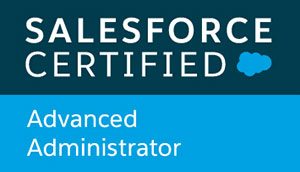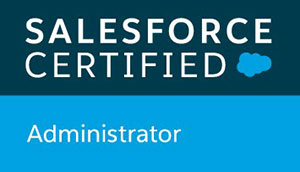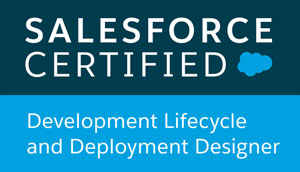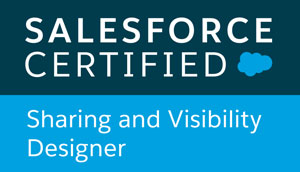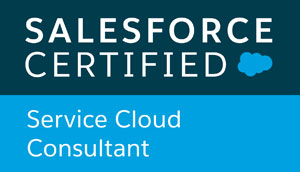About
AIDEO
A sales territory is a geographic region, business industry, or account type that is assigned to a specific salesperson or sales team. The goal of a sales territory is to target a specific market using a streamlined sales strategy that efficiently delivers resources to sales teams so they can close deals in that market. Territory management is a customer group or geographic area over which either an individual salesperson or a sales team has responsibility. These territories are usually defined based on geography, sales potential, its history or a combination of these factors. The ultimate aim of this division of areas is to maximise sales and profits, and to allocate resources efficiently.
It is very important to create sales territories that are balanced. When a sales territory is out of balance, there are two things that can happen. If a territory is being under-serviced, the sales team or salesperson is spread too thinly and it leads to sub-optimal levels of activity. Those responsible for the territories will seek out too few leads, identify too little prospects and spend too little time with customers because they are overworked. This leads to customers going to competitors and you losing sales.
- Define your market.
To effectively set up territories, sales leaders must first understand the environment of their business. There are numerous ways for a business to define a market. Factors
could include geography, size, and consumer demographics, competition, and more. But starting with internal company factors is key.
Take a look at your company’s core values, goals, and revenue. Which segment of your customer base is most aligned with these and generating the most revenue for the business?
Once you identify who this group is, look for similar niche markets that your sales team could tap into. For example, if your most profitable customers are in the consumer packaged goods sector, try targeting niche sectors of this industry like food & beverage or health & beauty products. These could become new territories for your business.
Know what is unique to your business and prioritize based on what your climate demands. Targeting a profitable market segment as its own sales territory will lead to lowered overhead costs, increased sales, and reduced customer churn.
- Assess account quality.
After you’ve identified the perfect target market for your sales territory, you’ll need to evaluate the value of each account within the market. The measurement could be either quantitative or qualitative, depending on the product or service your business offers.
For example, a beverage company might rank the value of its accounts by net profitability. In contrast, a company that relies heavily on customer recommendations could focus on accounts that are more likely to provide a referral for their company.
By determining the value of each account, you can prioritize each one in your sales territory planning. That way, your sales team understands which accounts are reflected
in their quota metrics and can give these accounts the attention they deserve.
- Determine territory quality.
After assessing the quality of each account, it’s time to determine how qualified the territory is as a whole. As with the accounts’ values, this process is subjective based on different business needs and priorities.
Continuing the consumer packaged goods example, if you have a food & beverage territory and a health & beauty territory, you may realize that each of them has different sales cycles, churn rates, and even repeat purchases. These are just a few examples of factors that could affect the quality of a sales territory.
Internally, you may decide that the sales cycle is the biggest determinant of territory quality and use this factor to rank each one from highest to lowest. A shorter sales cycle for the health & beauty territory could mean a quicker ROI for your team, so you could rank health & beauty as a higher quality territory than the food & beverage territory.
To get a better picture of territory value, include your sales team in these discussions. After all, no one knows the territories better than the reps who work within them each day. This way, you can assign the appropriate reps to maximize the potential of each territory.
- Understand your sales reps’ strengths.
The next step of effective territory management may be the most important of all. After determining the quality of each sales territory, you must assign reps with the applicable
skills to develop and optimize each one.
An example of an excellent sales territory assignment is assigning a territory defined by large enterprise deals to a rep who has experience closing big deals.
Now this isn’t to say that as a sales leader you should cherry pick certain reps to work certain territories. This step represents the opposite. Instead of relegating reps to highly specialized roles to the point of creating silos, you can cultivate an environment of continuous learning. Use the expertise of each sales rep to introduce best practices for each territory that can be passed on to other team members.
By strategically assigning qualified reps to accounts, you will empower your entire team to deliver an amazing buying experience for your clients.
- Review your sales territory plan.
The four steps outlined above will prepare your business to put a sales territory plan into action, but you’ll need to do a final diagnosis of costs associated with each territory.
Analyzing cost metrics will help you as a sales leader zero in on specific inefficiencies in the system and solve for them.
There are several ways to identify these industries, but I recommend you start with customer acquisition cost or CAC. By using this metric, you’ll quickly come up with a list of costs associated with prospecting and closing each deal. You can even compare CAC over time, against competitors, or against industry standards to determine what a healthy CAC should be for the territory.
- Design the final plan.
The last step of building a sales territory plan is to put it all together by designing your sales territories. Sales Territory Design When finalizing and designing your sales territories, consider the following factors: business need, market demand, and geography. Once you’ve created a preliminary version of your sales territory design, you can assign sales reps to them based on their expertise and interest in the territory.
• Sales Territory Management Best Practices
• Put a stellar sales leader in place.
• Practice sound cadence management.
• Consistently keep track of your data and customer needs.
• Don’t forget to pursue new leads.
- Put a stellar sales leader in place.
A sales territory plan is pretty much useless when you don’t have the right sales leader in place to guide the execution of it. This person will be responsible for sales territory
development, team management, and stakeholder alignment, so take your time and do your research when filling this role.
As you’re considering promoting your next sales territory manager from within or hiring one externally, check out our post on what to look for in a good sales territory manager.
- Practice sound cadence management.
Proper cadence management — the process of prioritizing, structuring, timing, and conducting account interactions — is central to successful sales territory management efforts. Your reps need to gauge account priority level, group accounts based on that assessment, and determine the best frequency, pattern, and nature of touches between them and contacts.
Cadences will differ from territory to territory. It might take some trial and error, but properly managing territories often hinges upon how you contact the prospects you’re trying to reach within each one.
- Consistently keep track of your data and customer needs.
Territory management is agile by nature. You can’t expect a specific territory to remain stagnant in how it responds to your sales strategies. Customer circumstances change, and you need to be able to quickly adapt to them. That’s why your reps need to keep records of their sales data in a CRM — making sure you’re keeping tabs on what is and isn’t working for you. Have reps maintain notes from their appointments and keep them on record. Stay abreast of every trend within all your territories to ensure they’re being catered to as effectively as possible. - Don’t forget to pursue new leads.
Effective sales territory management isn’t specific to existing accounts. Though this is a crucial component of the process, it’s not the only one. Always pursue new business — one way or another. That doesn’t mean forgetting about current accounts. You still need to keep them happy
— particularly high-volume ones. But if you want to grow your business, you have to consistently pursue new opportunities within your territories. Both kinds of customers serve an essential function to the health of your business, so both need their fair share of attention.
Remote Territory Management
Not all sales territories require an in-person presence, and there are instances when your reps will have to work remotely. If this is the case, your reps still need to abide by the best practices mentioned above, but in all likelihood, they’ll need to adjust their cadence.
A cadence that rests on in-person interactions will have to change if those interactions can’t happen anymore. It might mean finding a new progression that incorporates more phone time and remote tools like video calls.
It might take some trial and error, but you have to land on a cadence better suited to handle remote interactions — and that might not look like the one your reps are used to using.
In addition to adjusting cadence, you may have to adapt your sales territory plan to changes in the market or internally within the company. This is where sales territory alignment comes in.
Final Thoughts
An effective sales territory design can be the difference between well-organized, cohesive, successful sales efforts and inefficient, scattershot wastes of resources. If you understand and implement the sales territory rules of engagement discussed in this article, you can increase your chances of success no matter the territory you find yourself in.





















